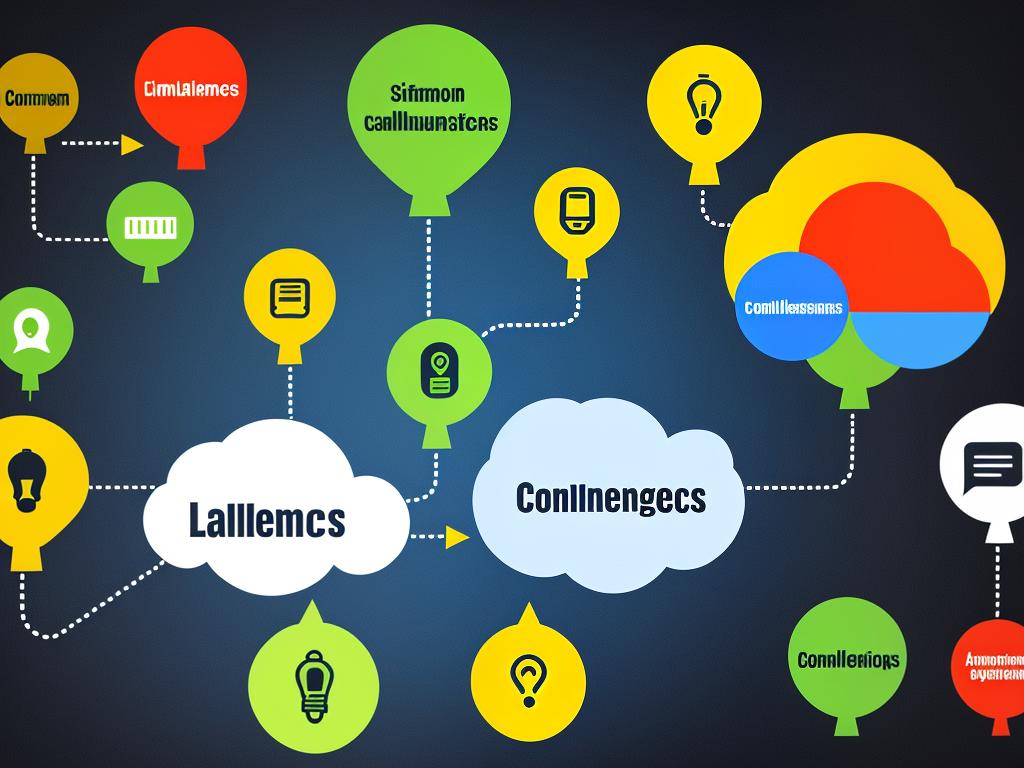Effective communication serves as the heartbeat of successful leadership, closely tied to guiding, nurturing, and achieving unified objectives. This discourse aims to delve into the influential role of communication in leadership, exploring its power, central elements, impediments, and ways to develop and enhance these critical sets of skills. From real-world examples of effective communication styles to investigating potential barriers and solutions, this comprehensive review provides valuable insights into developing the communication skills vital to effective leadership. By gaining a deep understanding of the value and importance of communication, you will be more equipped to encourage dialogue, resolve conflicts, and build a more effective, productive team.
Understanding the Power of Communication
Understanding the Power of Communication in Leadership
Communication is a critical skill for any individual, and its importance magnifies multifold in leadership positions. It serves as the backbone of every relationship and process within an organization – its absence leading to confusion, misunderstandings, reduced productivity and employee morale.
Benefits of Effective Communication in Leadership
Effective communication offers immeasurable benefits that positively impact both the leader and the team. It facilitates clarity and direction, allowing team members to understand their roles and responsibilities, preventing overlaps and gaps. It also leads to heightened engagement and motivation, as clear communication fosters a sense of transparency and inclusion among the team members.
Leaders who communicate effectively can better manage conflicts, ensuring that they are addressed and resolved promptly. Moreover, effective communication aids decision-making processes by ensuring that all relevant information and perspectives are considered.
Examples of Good and Bad Communication in Leadership
Great leaders are often great communicators. A classic example is Winston Churchill, the former Prime Minister of the United Kingdom. Churchill is celebrated for his inspirational speeches during World War II that motivated and united the British people under severely challenging circumstances.
Conversely, bad communication can lead to catastrophic downfalls. An example is the collapse of the global financial services firm, Lehman Brothers. The lack of transparent communication among top executives about the looming risks led to poor decision-making, ultimately leading to the largest bankruptcy filing in U.S. history.
Impacts of Communication on Team Dynamics and Project Outcomes
Communication in leadership directly impacts team dynamics and the outcomes of projects. Effective communication fosters a positive working environment, encouraging collaboration, innovation, and high morale. It ensures that everyone is on the same page regarding their responsibilities and deadlines, leading to timeliness and high-quality outputs.
On the other hand, a lack of communication can lead to confusion, mistrust, and low morale – all harmful for team cohesion and productivity. Projects may fall behind schedule or fail due to misunderstandings about roles or deadlines.
For anyone striving to be an effective leader, understanding the power of communication is a critical first step. Mastering communication can ensure clarity in mission and objectives, enhance productivity, and maintain high morale within a team. With these factors in place, fulfilling an organization’s goals becomes significantly more achievable.

Elements of Effective Communication in Leadership
Examining the Essential Role of Verbal and Non-Verbal Communication in Leadership
Leadership communication is a two-fold process, comprising of both verbal and non-verbal methods. Leaders must skillfully use both to successfully influence and inspire their teams. Verbal communication refers to the spoken or written words that convey clear, direct messages. A case in point is Elon Musk, the luminary behind Tesla and SpaceX, who routinely uses plain-spoken language to discuss intricate concepts about electric vehicles and space travel with his teams, stakeholders, and even the wider public.
The other equally important part of the communication equation is non-verbal communication. This encompasses everything from body language, facial expressions, the tone of voice to periods of silence. These unspoken cues often signal emotional context and sincerity, thus giving them a substantial impact, sometimes more than spoken words. An example is Apple’s Tim Cook, whose calmness, deliberate movements, and thoughtful articulation embody his leadership style.
Active Listening: A Crucial Component of Effective Leadership Communication
Active listening plays a crucial role in leadership communication. It involves fully focusing on the communicator, understanding their message, responding thoughtfully, and remembering what was said. Active listening enables leaders to understand and address their team members’ needs, fostering a supportive work culture. A prominent example of this is Satya Nadella, CEO of Microsoft, whose active listening skills have helped create an inclusive and open-minded company culture.
Providing Feedback: A Key Aspect of Communication in Leadership
Providing regular and constructive feedback is a key communication skill for leaders. Effective feedback helps team members know what they are doing well and areas that need improvement. Good leaders use feedback to motivate their teams and foster personal development, ultimately improving overall team performance. Sheryl Sandberg, COO of Facebook, is known for her thoughtful approach to delivering feedback, which fosters a culture of open communication and continuous learning within the company.
Maintaining Clear and Open Channels for Discussion
Creating an environment of open communication is a hallmark of effective leadership. This environment encourages team members to share their ideas, concerns, and feedback without fear of criticism. Open and transparent communication channels ensure information flows in all directions, avoiding misunderstandings and facilitating decision-making. One such leader who has championed open communication is Mary Barra, CEO of General Motors, who encourages an open dialogue to resolve problems and innovate quickly.
Implementing Effective Communication Strategies in Leadership
For successful leadership, it is crucial to uphold essential aspects of effective communication. To accomplish this, certain strategies can be put into practice such as conducting regular team meetings and individual discussions, promoting open and constructive communication. The exercise of active listening and displaying empathy during these interactions is a crucial aspect. Further, aiming at enhancing their leadership role, leaders can organize regular training and workshops to hone their communication skills. This commitment to nurturing communication is the hallmark of the world’s most successful and esteemed leaders.

Impediments to Effective Communication and their Solutions
Overcoming Obstacles to Effective Communication in Leadership
The facet of leadership communication integrates directing, coordinating, and aligning team members to fulfil a shared objective. Nonetheless, this process may encounter numerous obstacles that hinder effective communication between leaders and their crew. Barriers such as misinterpretations, cultural disparities, conflicts, physical impediments and technical glitches, just to name a few, may obstruct clear communication.
Misunderstandings as Communication Barriers
Misunderstandings are common communication barriers in leadership roles. They crop up when the message from the leader is not clearly understood by the team members. This could be due to complex language, ambiguous instructions or failure to clarify ideas.
Cultural Differences
Cultural differences also present challenges in leadership communication. In diverse workplaces, the various cultural backgrounds can result in different interpretations of messages, causing confusion and tension.
Disagreements within the Team
Disagreements within the team can disrupt efficient communication. Differences in perspectives or conflicts can hamper effective dialogues, and if not addressed properly, can lead to workgroup disunity.
Physical Barriers
Physical barriers such as distance and lack of face-to-face interactions can impede effective communication. In such cases, non-verbal cues get lost, making messages seem impersonal, which can lead to misinterpretation.
Technological Issues
Technological issues, such as poor internet connectivity, incompatible software, or outdated devices, can disrupt digital communication channels and cause delays or miscommunication.
Communication Solutions for Leadership
Despite these hurdles, leaders can apply specific strategies to foster effective communication within their teams.
Counteracting Misunderstandings
To counter misunderstandings, leaders should aim to deliver clear and concise messages. This may involve using simple language, providing detailed instructions, or asking for feedback to ensure message comprehension.
Bridging Cultural Gaps
To bridge cultural gaps, leaders can foster an inclusive work environment. Cultural awareness training could help team members understand and respect each other’s backgrounds, leading to fewer communication problems and more harmonious workspaces.
Resolution Strategies for Disagreements
Resolution strategies such as negotiation or mediation can be used to tackle disagreements. Providing a neutral platform where team members can express their views may enhance communication flow.
Overcoming Physical Barriers
Leaders can overcome physical barriers by leveraging technology that supports real-time, multi-modal communication. For instance, video conferencing can provide visual cues that add depth to the exchanged messages.
Preventing Technological Issues
To prevent technological issues from hampering communication, organizations should invest in reliable, up-to-date technology tools. Providing tech support and training to team members can also help to ensure smooth communication channels.
Wrapping Up
Ultimately, leaders bear the responsibility to pinpoint and rectify these communicational hurdles, creating a harmonious, effective workspace. Skillful communication aligns everyone with the company’s objectives, leading to improved problem-solving, decision-making and team chemistry.

Developing and Enhancing Communication Skills for Leadership
Refining Leadership Through Communication Skills
Continuous development of communication skills can remarkably enhance a leader’s efficacy. As leaders are the helm of the team, they must distinctly express their vision through open and clear communication, fostering trust, clarity, and a conducive atmosphere for efficient productivity.
Emphasizing Empathic Communication
Empathic communication is essential for leaders aiming to cultivate more meaningful and encouraging environments. Leaders who communicate empathetically can connect deeply with their team members and understand their feelings and perspectives. Empathic communication fosters a sense of trust and respect between leaders and team members. With empathy, leaders can exhibit understanding and concern for their people’s issues and emotions. Moreover, it can motivate team members to perform better as they feel understood and valued.
Harnessing the Power of Persuasive Communication
The role of persuasion in leadership cannot be underestimated. Leaders often have to influence people, change their views, or convince them to follow a particular course of action. By mastering persuasive communication, leaders can communicate the benefits of their ideas and decisions, thus gaining the support of their team. Persuasive communication involves expressing viewpoints compellingly, engaging the audience, actively listening, and responding to concerns and objections effectively.
Improving Non-verbal Communication Techniques
Non-verbal communication also plays a crucial part in the process of leadership. Leaders not only have to be mindful of what they say but also how they express it. Body language, facial expressions, tone of voice, and hand gestures significantly influence how the message is received. By enhancing non-verbal communication, leaders can ensure their messages are clearly understood and interpreted as intended. For example, maintaining eye contact while speaking can indicate sincerity and confidence.
Leveraging Communication Technology
With the advent of advanced communication technology, leaders can now communicate their ideas and directives efficiently and effectively. Tools such as email, video conferencing, and collaborative workspaces can help convey information swiftly and in a well-structured manner. However, leaders must use these technologies judiciously and ensure they don’t replace the need for face-to-face interaction. Also, understanding when to use different types of communication – whether through spoken, written, visual or technological means – is crucial for successful leadership.
Providing Opportunities for Feedback
In leadership communication, feedback is indispensable. Leaders should encourage two-way communication and provide opportunities for team members to voice their opinions and perspectives. Providing feedback can increase transparency, enhance understanding, and improve shared decision-making. On the other hand, leaders should also be open to receiving feedback on their communication style and take it as an opportunity for continual growth and improvement.
Conducting Regular Training and Practice
Regular training and practice can help to enhance leaders’ communication skills. Through interactive workshops, role-playing exercises, and scenarios, leaders can practice communicating effectively both individually and within groups. Additionally, they can learn from their mistakes and make necessary adjustments to refine their communication style. This consistent effort can pay rich dividends in the form of improved team dynamics, engagement, and productivity.
The Integral Role of Communication in Successful Leadership
Successful leadership is often paralleled with effective communication. As such, any aspiring leader must endeavor to hone not only traditional verbal and non-verbal communication skills, but also master the nuances of modern communication technologies and methodologies. The application of these skills stands to result in a myriad of benefits, including healthier team dynamics, stronger interpersonal relationships, and consequently, an overall enhancement in achieved outcomes.

Case Study Analysis of Leadership Communication
Exploring the Significance of Leadership Communication: The Apollo 13 Mission
A prime illustration of the successful execution of leadership communication is evident from the Apollo 13 space mission, directed by NASA’s mission control center. This mission turned precarious when an oxygen tank onboard exploded, posing a grave risk to the three astronauts involved. However, the ensuing unfolding of events coined the mission as a “successful failure”, with the spotlight falling on exceptional leadership communication.
Flight director Gene Kranz, at the helm of mission control, showcased sterling leadership communication traits during the crisis. He stood out for articulating crystal-clear instructions and information – a key element of skilled leadership communication. In a situation fraught with tension where timeliness was everything and there was no room for ambiguity or misunderstanding, Kranz thrived. His formidable communication skills turned a potential catastrophe into a triumphant endeavor, ensuring the safe return of the crew to Earth.
Failure of Leadership Communication during the BP Oil Spill
On the contrary, an example of unsuccessful leadership communication is the British Petroleum (BP) Deepwater Horizon oil spill in 2010. When the oil rig exploded, leading to an environmental catastrophe, BP’s CEO Tony Hayward faced immense public scrutiny for his ineffective communication.
Instead of taking responsibility, Hayward was noted for his dismissive and inappropriate comments. He lacked empathy in his communication, causing public outrage. His infamous line, “I’d like my life back,” exemplified his lack of regard for the incident’s gravity, indicating a severe failure in leadership communication. This incident underscores the need for empathetic, responsible, and compassionate communication from a leader, especially in times of crises.
The Effective Leadership Communication in the Tylenol Case
Another excellent example of leadership communication came from Johnson & Johnson during the 1982 Chicago Tylenol murders. Seven people died after ingesting Tylenol capsules that had been tampered with and laced with cyanide.
Johnson & Johnson’s swift response to abandon their immediate financial interests to prioritize consumer safety set the bar for crisis communication. Their CEO, James Burke, acted quickly and decisively, immediately withdrawing 31 million bottles of Tylenol from the market.
Burke also communicated openly and honestly with the public about the steps being taken, demonstrating transparency and empathy. The company’s quick, responsible reaction and clear communication minimized damage and ultimately restored public faith in the Tylenol brand.
Poor Leadership Communication in the Case of Equifax Data Breach
A case demonstrating poor leadership communication is the Equifax situation in 2017, where a data breach exposed the personal information of nearly 143 million Americans. Despite discovering the breach on July 29, the company did not announce it publicly until September 7.
This delay demonstrated a lack of transparency from the leadership, leading to severe public backlash. Also, when the breach was announced, the information provided was vague and left consumers uncertain about whether or not they were affected. This opacity of information and absence of a clear plan showcased a failure in leadership communication.
The Role of Leadership Communication
These case studies emphasize the pivotal role of communication in effective leadership. Successful leaders communicate promptly and clearly, especially during a crisis, using empathy and transparency. In contrast, poor leadership communication can lead to distrust, confusion, and a loss of reputation or credibility.

Our examination of leadership communication underscores how well-honed communication skills can significantly elevate a person’s ability to lead effectively. These skills not only enable leaders to develop stronger relationships within their teams but also promote the accomplishment of organizational goals. Through examining real-world case studies, we’ve seen the profound implications for success and failure based on diverse communication practices. Thus, a commitment to continual learning and refining one’s communication strategies is of paramount importance. With a greater emphasis on effective communication, leaders can foster a more cooperative, engaged, and efficient environment, directly contributing to the overall performance and success of the organization.